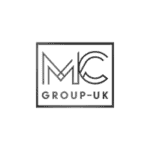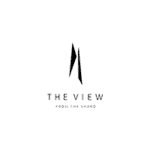1/14
Exploring the history, origins, and inspiration behind the brand
Identifying the "who," "what," "where," "why," and "how" of the brand's narrative. What is the history and story behind your brand? Can you share the brand's origin and what inspired its creation? Who are the key individuals or driving forces behind the brand's establishment? What events or milestones have shaped the brand's journey?
The Result
2/14
Market and Competitor Analysis
Reviewing the competitive landscape and market trends to identify gaps and opportunities. How do you perceive your brand in the current market landscape? Who are your main competitors, and what sets your brand apart from them? What market trends or opportunities do you believe the brand can leverage? Are there any gaps or unmet needs in the market that your brand can address?
The Result
3/14
Target Audience Profiling
Creating detailed personas of the brand's ideal customers to understand their needs, preferences, and pain points. Who is your ideal customer or target audience?
Can you describe their demographics, interests, and behaviours? What are the pain points or challenges your target audience faces that your brand can help solve? What are the unique needs and preferences of your potential customers?
The Result
4/14
Brand Name Generation
Brainstorming potential brand names that align with the brand's identity and goals. What words or ideas do you want the brand name to convey? Are there any specific themes or concepts you'd like the brand name to incorporate? Is there any cultural or historical significance that should be considered for the brand name? Are there any restrictions or preferences related to the brand name?
The Result
5/14
Mission Statement Development
Crafting a concise and inspirational statement that communicates the brand's core purpose and reason for existence. What is the fundamental purpose and mission of your brand? What values and principles guide your brand's actions and decisions? How do you envision your brand making a positive impact on the world? What do you want people to associate with your brand when they read the mission statement?
The Result
6/14
Vision Statement Creation
Crafting a concise and inspirational statement that communicates the brand's core purpose and reason for existence. Defining a future-oriented vision statement that outlines the brand's long-term aspirations and goals. What are the long-term goals and aspirations of your brand? How do you envision the brand's future and growth over time? What impact or influence do you hope your brand will have in the long run? What is the ultimate vision you have for your brand?
The Result
7/14
Purpose Statement Articulation
Formulating a purpose statement that describes the brand's broader societal or community impact. How does your brand aim to contribute to society or a specific community?
What broader impact or change do you want your brand to be a part of? Can you describe the social or environmental initiatives your brand supports or plans to support? What drives the purpose and meaning behind your brand's actions?
The Result
8/14
Brand Values Identification
Identifying and listing the core values that the brand upholds, providing a framework for decision-making. What values are most important to your brand's identity? Can you list the core values that guide your brand's decisions and behaviour? Are there any specific principles that you want your brand to consistently uphold? How do these values align with your brand's mission and vision?
The Result
9/14
Tone of Voice Exploration
Discussing the desired tone of voice for the brand, which may include characteristics like friendly, professional, authoritative, or conversational. What tone or personality do you want your brand's communication to have? Do you envision your brand's voice as friendly, professional, authoritative, or conversational? Are there specific emotions or feelings you want your brand's tone to evoke in the audience? What are some adjectives that describe the desired tone for your brand?
The Result
10/14
Visual Identity Elements
If relevant, consider aspects of the brand's visual identity, such as logo, colour palette, typography, and imagery. If applicable, what visual elements currently represent your brand (e.g., logo, colours, typography)? Are there any specific changes or improvements you would like to make to the visual identity? How should these visual elements reflect and reinforce your brand's identity and values?
The Result
11/14
Word Association and Mind Mapping
Using word association exercises or mind maps to generate ideas and concepts related to the brand's identity and messaging. What words, ideas, or concepts come to mind when you think of your brand? Can you describe any symbols, metaphors, or images that you associate with your brand? How do these associations relate to your brand's identity and messaging?
The Result
12/14
Brand Positioning Analysis
Determining where the brand wants to be positioned in the market and how it wants to be perceived by customers. Where do you see your brand positioned in the market? How do you want your brand to be perceived by your target audience? What makes your brand unique and different from competitors in the eyes of your customers? Are there specific brand attributes you want to emphasise in positioning?
The Result
13/14
Storytelling
Crafting brand stories that illustrate the brand's personality, values, and unique selling points. Can you share stories or anecdotes that illustrate your brand's personality, values, or unique selling points? What narratives or experiences can connect your brand with your audience on a personal level? How do you want your brand's stories to resonate with your customers and create a lasting impression?
The Result
14/14
SWOT Analysis (Strengths, Weaknesses, Opportunities, Threats)
Assessing the brand's internal strengths and weaknesses as well as external opportunities and threats. What are the key strengths or advantages of your brand? What weaknesses or challenges do you currently face? Have you identified any promising opportunities for growth and improvement? Are there any potential threats or risks that your brand should be aware of?
The Result






























































